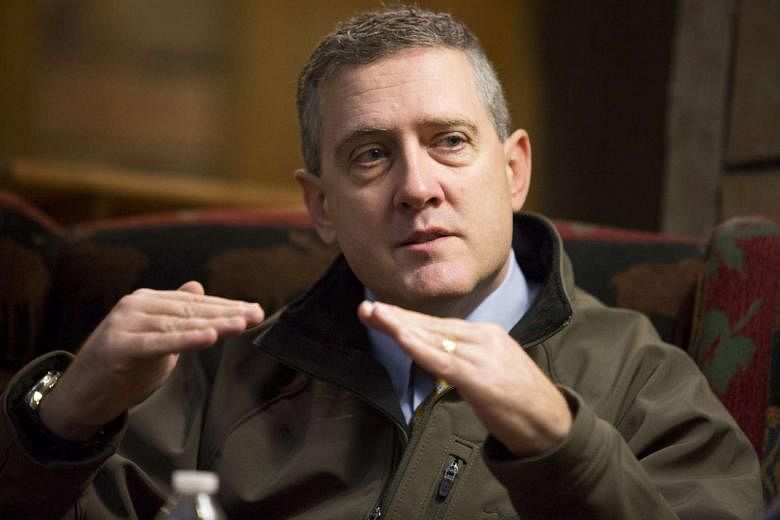ST. LOUIS (REUTERS) - The Federal Reserve has been struggling to convince investors it is about to raise interest rates and now faces the risk that a likely slowdown in job growth will be interpreted as a downturn in the broader economy that will cause the Fed to hold off yet again, St Louis Fed President James Bullard said on Thursday (Nov 5).
In an interview with Reuters, Mr Bullard said US central bankers may need to mount a new communications campaign to convince markets and the public of a counter-intuitive idea: that slowing monthly job growth is natural at this point in the recovery, and will allow the Fed to stay on track for a likely December rate hike.
Job growth averaging more than 200,000 per month during the recovery is unsustainable, Mr Bullard said, estimating that growth of between 100,000 and 125,000 per month would be enough to account for an increasing population and a trend rate of economic growth.
"This is not Lake Wobegon. You cannot be above average all the time," Bullard said. "I don't think markets have absorbed this. Everyone has in their head 200,000...The natural expectation is for the pace of job growth to slow in the months and quarters ahead. We are expecting that to happen. It would be normal, and that would not indicate poor macroeconomic performance."
The latest job numbers come out on Friday (Nov 6), and will be closely parsed for clues about how it might influence the Fed. A dip in September to growth of 140,000 jobs caused doubt about whether the Fed could follow through with its rate hike plans.
Mr Bullard said explaining any downturn in jobs is one of several struggles the Fed may face not just in approvingg its "liftoff" rate hike, but in the longer battle to raise rates to a near-normal level.
It has been nearly a decade since the Fed last approved a rate increase, and Mr Bullard said it is an open question how members will return to a meeting-by-meeting judgment of whether to move higher.
"The committee is not used to thinking in those terms because we have been at zero for so long. When is the next move and why? That will be a healthy debate," he said.
The Fed used its statement last week to set the stage for a December liftoff, using language explicitly meant to correct what Mr Bullard said was a "disconnect" between the Fed's judgment that a rate hike was coming soon and investors who had pushed expectations of Fed action well into next year.
Though Mr Bullard said he generally opposes such "calendar"guidance, circumstances called for it in this case. "Market expectations had gone out so far...It was good to reel it in," he said.
The risk now, he said, is that what may be a natural evolution in job growth gets misinterpreted, and undermines perceptions of the Fed's intentions yet again.
Mr Bullard is among the Fed policymakers who are more concerned about inflation, and pushed for a rate hike when the US central bank met in September.
But the level of job growth expected as the recovery matures is something policymakers of all stripes are watching carefully. It figures into forecasts of the unemployment rate, and also into projections of what the US economy would look like if it was growing at a sustainable trend rate.
Several Fed officials have put that figure at around 100,000 jobs per month. A 2014 study of labor market demographics by top Fed staff said that in coming years between 50,000 and 75,000 additional jobs would be needed each month "to maintain an unchanged unemployment rate."
"We want to be talking more about this," Mr Bullard said.

